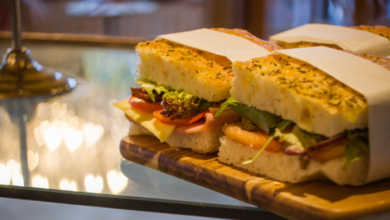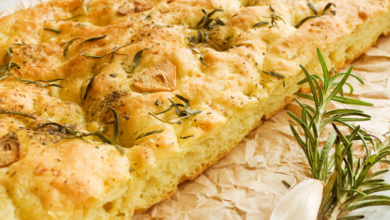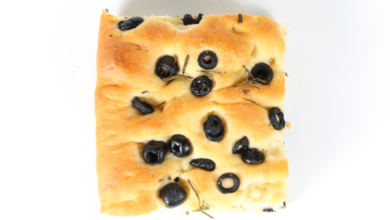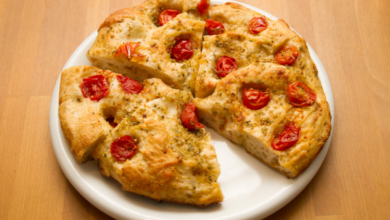Is Focaccia Leavened or Unleavened? Learn The Ingredient!
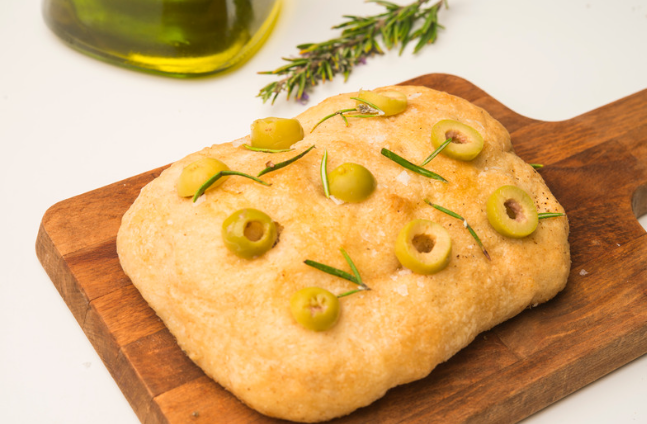
What To Know
- Yeast is a fungus that consumes sugars in the dough and produces carbon dioxide gas as a byproduct.
- The use of yeast as a leavening agent is essential for creating the characteristic rise, air pockets, and chewy texture associated with focaccia.
- The use of yeast as a leavening agent is what sets focaccia apart from other flatbreads and gives it its distinctive characteristics.
Focaccia, a beloved Italian flatbread, has captivated taste buds for centuries. Its distinctive dimpled surface and chewy texture have made it a staple in countless cuisines. However, one fundamental question has perplexed culinary enthusiasts and home bakers alike: is focaccia leavened or unleavened? Let’s delve into the world of focaccia and uncover the truth behind its leavening status.
The Definition of Leavening
Leavening refers to the process of incorporating gases into a dough, causing it to rise and become lighter. This can be achieved through the use of yeast, baking powder, or baking soda. Unleavened dough, on the other hand, lacks any leavening agents and remains flat when baked.
Focaccia: A Leavening Conundrum
Traditional focaccia recipes typically include yeast as the leavening agent. Yeast is a fungus that consumes sugars in the dough and produces carbon dioxide gas as a byproduct. This gas forms bubbles within the dough, causing it to expand and rise.
However, some modern focaccia recipes may omit yeast and rely on other techniques to create air pockets. These techniques include stretching and folding the dough, which traps air and creates a similar effect to leavening.
The Role of Fermentation
The fermentation process plays a crucial role in the development of focaccia’s flavor and texture. When yeast is added to the dough, it begins to ferment the sugars present. This process produces lactic acid and other compounds that contribute to focaccia’s characteristic tangy flavor. Fermentation also allows the gluten proteins in the flour to relax, resulting in a more tender and chewy texture.
Unleavened Focaccia: A Rare Exception
While leavened focaccia is the most common variation, there are rare instances where unleavened focaccia may be encountered. These variations are typically made with a dough that contains no yeast or other leavening agents. The result is a flatbread that resembles a cracker or a thin, crispy pizza crust.
The Importance of Dough Hydration
The hydration level of the dough also affects the leavening process. A well-hydrated dough will be more extensible, allowing for greater gas expansion and a more open crumb. Over-hydrated dough, however, can make the dough too slack and difficult to handle.
The Verdict: Focaccia is Leavened
Based on the evidence presented above, we can conclude that traditional focaccia is a leavened bread. The use of yeast as a leavening agent is essential for creating the characteristic rise, air pockets, and chewy texture associated with focaccia. While unleavened focaccia variations may exist, they are not as common and do not represent the true nature of this beloved Italian flatbread.
Why does Leavening Matter?
The leavening process has a profound impact on the quality of focaccia. Leavening creates a lighter and more airy texture, making focaccia more enjoyable to eat. It also contributes to the development of a crispy crust and a chewy interior.
In a nutshell: Unveiling the Secrets of Focaccia
The question of whether focaccia is leavened or unleavened has been answered: focaccia is a leavened bread. The use of yeast as a leavening agent is what sets focaccia apart from other flatbreads and gives it its distinctive characteristics. By understanding the role of leavening, bakers can create focaccia that is both delicious and authentic.
Common Questions and Answers
1. Can I make focaccia without yeast?
Yes, it is possible to make unleavened focaccia by omitting yeast from the dough. However, the resulting flatbread will be denser and less flavorful than traditional focaccia.
2. Why is my focaccia not rising?
There are several reasons why focaccia may not rise properly. The yeast may be inactive, the dough may be too cold, or there may not be enough water in the dough.
3. How can I improve the flavor of my focaccia?
Allowing the dough to ferment for a longer period of time will develop a stronger flavor. You can also add herbs, spices, or other ingredients to the dough for additional flavor.
